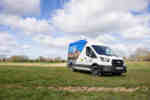The changing face of the industry throughout Europe is apparent to all involved, with more cross-border trading in both new and used vehicles.
There are no longer really any borders and the paperwork involved in moving vehicles about is becoming less complicated. Used vehicles are now flooding between countries as markets have been created for various cars in different regions.
The work carried out by international dealers has been going on for years, but it has recently begun to pay off for them. They have been taking enormous risks with their own money, with a 'some you win, some you lose' attitude.
Finding and developing these markets that span the whole of Europe and beyond has not been an easy task. But thanks to these entrepreneurs the whole European used car market has remained fairly healthy.
However there comes a time when even the brightest and most efficient trader has doubts about how they will fare.
This happened recently when the whole of the used car market, along with almost every other industry in the world, seemed to shut down for a number of weeks.
This created a build-up of stock and even the most secure of markets turned volatile, leaving traders with unwanted and overpriced vehicles with nowhere to go.
But the resilience of these people seems to be winning through as they, like everyone else, are cutting their losses and starting again.
Hopefully the temporary blip felt by everyone is now just a memory but if another disaster should hit us then you can be sure that the traders will not take a back seat and give up.
-
In 2002 there will be many new car launches, many of which will affect the fleet market. As all-new cars appear, the outgoing model suddenly begins to look dated and values tend to suffer, particularly for the late ones.
Those over three years old carry on regardless. The new contenders will include the Ford Fiesta, Volkswagen Polo, Citroen C3, Hyundai Coupe, Mazda 323, Toyota Corolla, Nissan Primera, BMW 7-series, Opel Vectra and Fiat Stilo, to name just a few.
Manufacturers seem to be shortening vehicle lifecycles as they replace, or facelift, with more regularity.
And as a result used cars look less desirable. But it is not only the look of the car that changes; with every new model there is a tendency for it to be larger than the outgoing one.
Safety also gets better and the technology now being introduced to improve economy, handling and the general build quality is far more advanced than it was just a couple of years ago. This alone makes older cars not only look old, but feel old.
Throughout most of Western Europe the lifespan of vehicles is decreasing to such an extent that a car more than five years old is often ready for the scrap heap, years sooner than originally planned by the manufacturer.
It seems ironic that although better cars are being built, which should almost last forever, we are living in a throw-away society that is always looking for something new.
This is decreasing the lifespan of virtually all products as technological issues and environmental rhetoric are perhaps playing a bigger part in decision-making than common sense. (December 2001)
















Login to comment
Comments
No comments have been made yet.